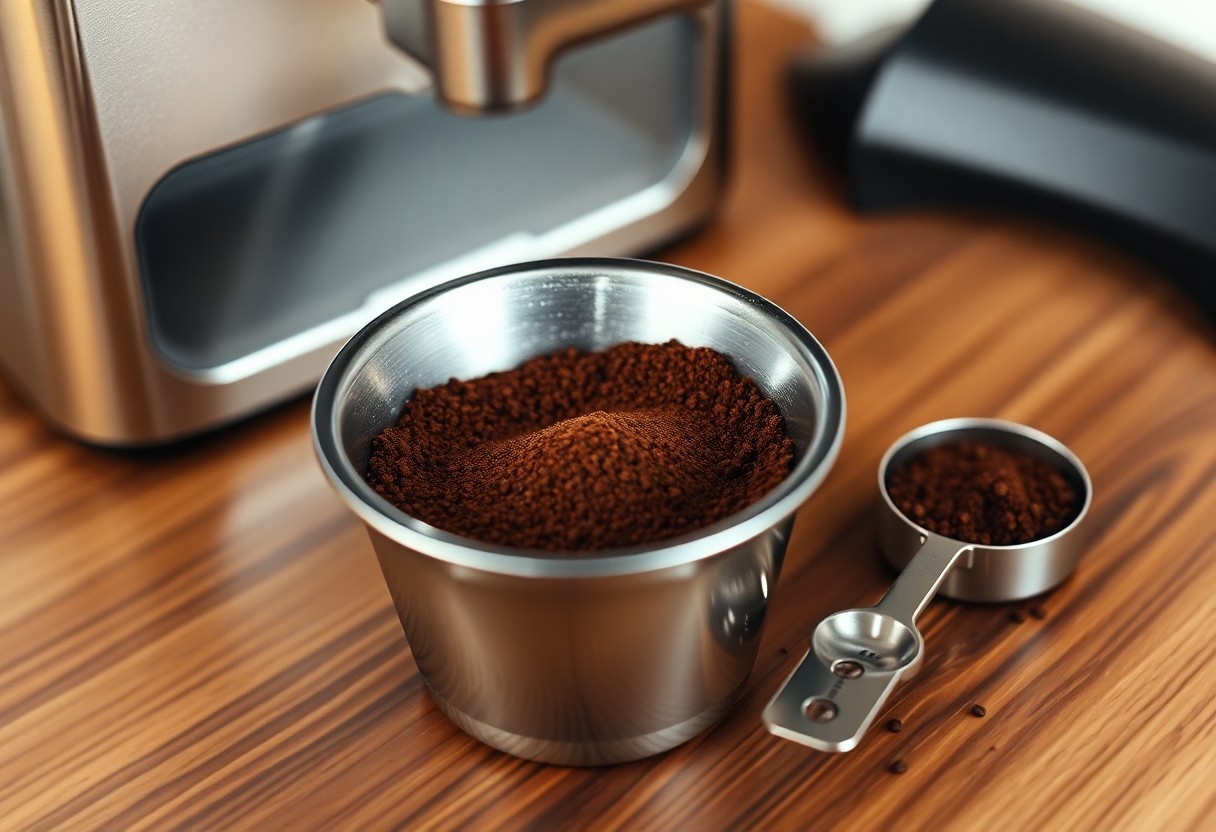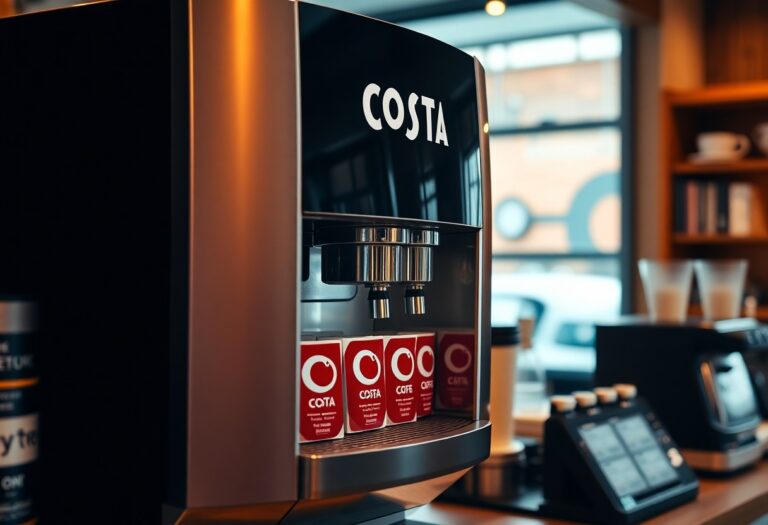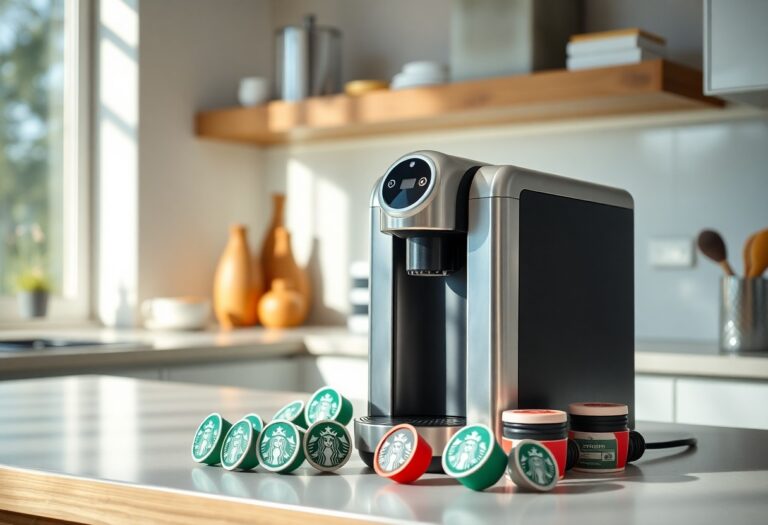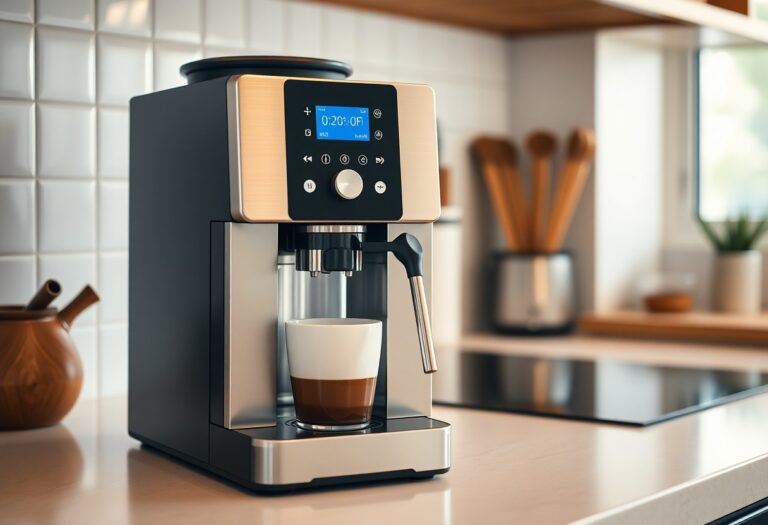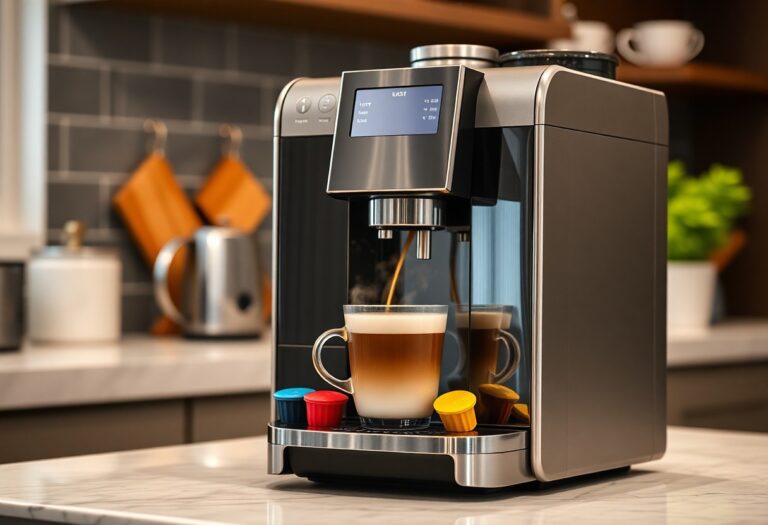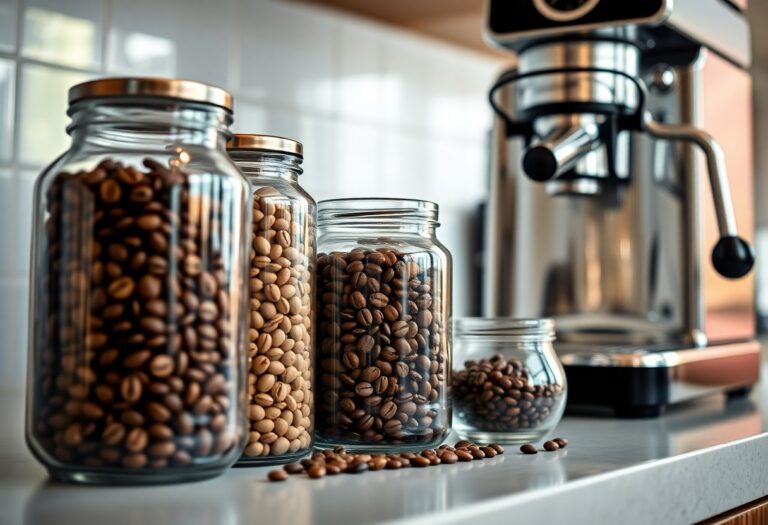What Coffee Powder to Use for an Espresso Machine – Fine Grind
Over time, you may have discovered that the type of coffee powder you use plays a significant role in the quality of your espresso. When using an espresso machine, it’s necessary to choose a fine grind that allows for optimal extraction of flavors and aromas. By using the right grind size, you can enhance your coffee’s richness and achieve that perfect crema on top. In this post, you’ll learn about the best coffee beans to use, how the grind affects taste, and tips for ensuring you get the best espresso possible.
Key Takeaways:
- Opt for a fine grind to maximize extraction and achieve the rich, bold flavor characteristic of espresso.
- Use freshly ground coffee beans to enhance the aroma and overall taste of your espresso.
- Pay attention to the coffee-to-water ratio, typically around 18-20 grams of coffee for a double shot.
- Experiment with different coffee bean origins and blends to discover unique flavor profiles in your espresso.
- Maintain consistent grind size by investing in a quality burr grinder for optimal brewing results.
The Art of Selecting Coffee Beans for Espresso
Choosing the right coffee beans for espresso is akin to a painter selecting their colors, as the right combination can create a masterpiece. Factors such as origin, altitude, and processing methods significantly influence the flavor profile, aroma, and overall experience of your espresso. Look for beans specifically labeled for espresso to ensure they are suited for the intense brewing method, offering you a rich, balanced, and delightful shot with every extraction.
The Influence of Bean Origin on Flavor Profile
The origin of your coffee beans plays a vital role in determining their flavor characteristics. For instance, beans from Latin America typically provide a bright acidity and notes of citrus, while those from Africa tend to offer fruity, floral undertones. In contrast, beans from Asia often deliver fuller-bodied profiles with earthy and spicy flavors. Understanding these regional characteristics can help you tailor your espresso experience to your taste preferences.
Exploring Roast Levels: Choosing the Right Darkness
The roast level significantly affects how your espresso will taste, influencing both the sweetness and bitterness of the shot. Light roasts typically preserve more of the bean’s natural flavors, presenting bright acidity and complexity. Medium roasts strike a balance, bringing out a richer body while still maintaining some of those original qualities. Dark roasts prioritize boldness and a fuller body, often resulting in a bittersweet flavor, but can also mask finer notes. Choosing the right roast depends on whether you prioritize clarity or intensity in your espresso.
When you explore roast levels, consider that a medium roast might yield a pleasing balance without overwhelming flavors, while a dark roast might deliver a robust cup with a caramelized finish. Conversely, if you appreciate the intricate, nuanced notes of a lighter roast, it may add unique dimensions to your espresso experience. Ultimately, experimenting with different roasts from various origins will help you uncover the perfect combination that pleases your palate and enhances your coffee moments.
Grinding to Perfection: Achieving the Fine Grind
Mastering the fine grind is crucial for pulling a rich and balanced espresso shot. Ideally, your grind should resemble granulated sugar—not too coarse, to avoid under-extraction, and not too fine, which could lead to over-extraction. Achieving this grind size ensures optimum water flow, allowing flavors and oils to develop fully within your espresso shot. A consistent grind allows for predictably great results every time you brew.
Why Grind Size Matters in Espresso Brewing
Grind size significantly impacts the extraction process, influencing taste and quality. A fine grind, specific to espresso, increases the surface area of the coffee, allowing hot water to extract flavors more effectively. If your grind is too coarse, your espresso may taste weak and sour due to under-extraction. Conversely, a grind that is too fine can lead to bitterness from over-extraction. Striking the right balance allows you to enjoy the nuanced flavors of your beans.
Equipment Choices: Burr Vs. Blade Grinders
The choice of grinder can make or break your espresso experience. Burr grinders provide a consistent grind size and are generally preferred over blade grinders. While blade grinders chop coffee beans unevenly, causing inconsistent extraction, burr grinders crush beans to a uniform size, crucial for high-quality espresso. This uniformity allows for optimal extraction, maximizing flavor and aroma.
Investing in a burr grinder can elevate your coffee game significantly. For instance, a good burr grinder produces consistent particle sizes between 200 and 1,000 microns, ensuring even extraction. In contrast, blade grinders often fail to deliver this level of precision, with grind sizes varying from powder to chunky fragments. This inconsistency can yield erratic flavor profiles in your espresso, leading to frustration in your brewing process. By prioritizing a burr grinder, you gain better control over your espresso outcome, leading to a more enjoyable coffee experience.
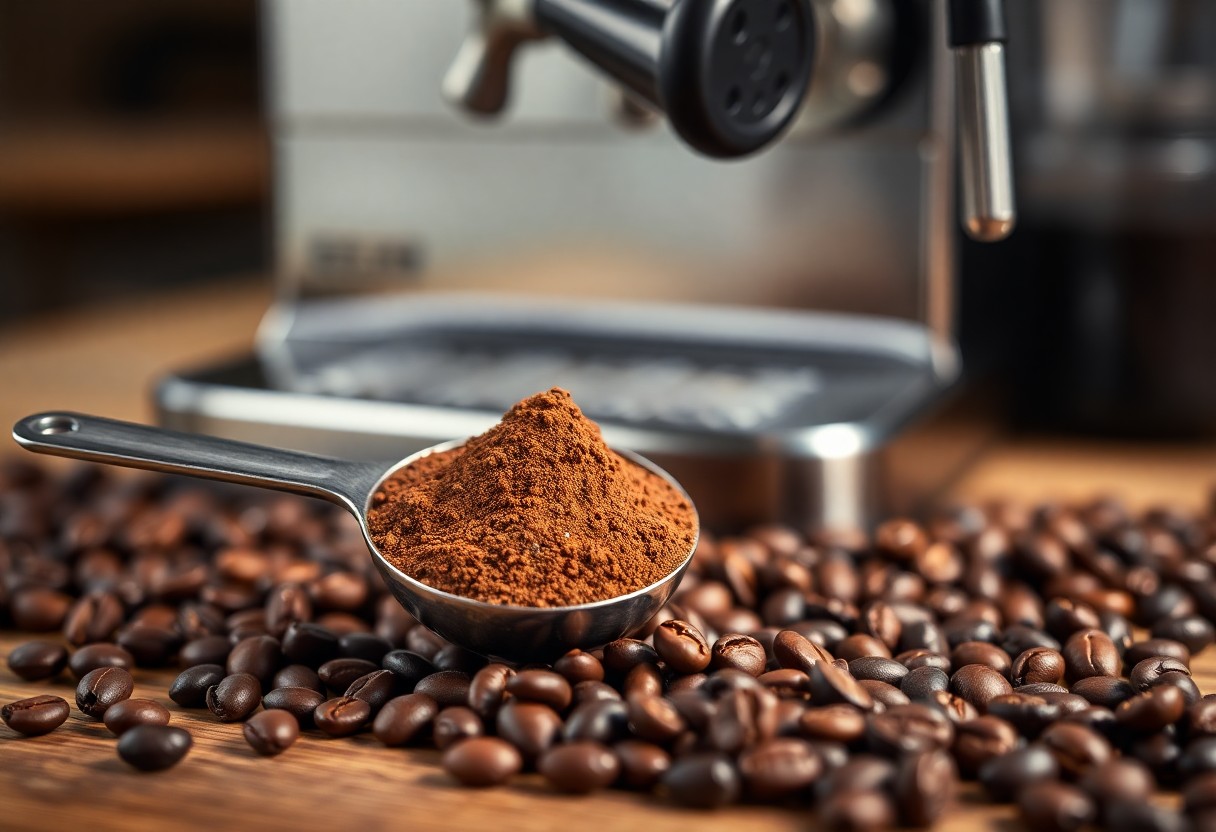
Unlocking Flavor: The Importance of Freshness
Freshness dramatically impacts the flavor profile of your espresso. Coffee beans start to lose their unique characteristics soon after roasting, which means the longer they sit, the less vibrant your espresso will taste. For the best flavor extraction, you want to use beans that are less than two weeks post-roast time. Aim for a fresh batch whenever possible, as these beans contain the vital oils and volatile compounds that translate to rich, complex flavors in your espresso.
Understanding the Coffee Shelf Life
Freshly roasted coffee beans typically have a shelf life of about two to four weeks when stored properly. Over time, exposure to air, moisture, heat, and light can quickly degrade the quality of your beans, leading to a stale taste. Pre-ground coffee loses its flavor even faster, often within a week, which is why investing in a good grinder is key to maintaining the freshness of your espresso.
Best Practices for Storing Coffee Beans
Storing your coffee beans correctly ensures they remain fresh longer. Keep them in an airtight container to limit exposure to air, and place this container in a cool, dark location, away from direct sunlight and heat sources. Avoid storing your beans in the freezer, as fluctuating temperatures can lead to moisture formation, which compromises the flavor. If you buy in bulk, consider portioning out beans into smaller containers to limit the amount of air they are exposed to each time you open the stash.
Airtight storage containers made of glass or stainless steel are excellent choices for maintaining freshness. Additionally, it’s beneficial to keep your coffee away from strong odors, as beans can easily absorb them. Some enthusiasts recommend vacuum-sealed bags or canisters with CO2 valves for long-term storage, as they allow gases to escape while blocking oxygen, thus preserving the freshness longer. By implementing these best practices, you can ensure each espresso shot you brew bursts with flavor and depth.
Brewing Techniques: Mastering the Espresso Process
Mastering the espresso process requires a blend of art and science. Understanding the various brewing techniques will enhance your coffee experience significantly. From tamping pressure to brewing temperature, each element plays a vital role in achieving that perfect espresso shot. You’ll discover that by fine-tuning your approach, you can unlock a world of flavors and aromas in every cup.
The Science of Espresso Extraction
The extraction process is vitally the art of solubility, as it involves dissolving the coffee’s soluble compounds into your beverage. With an ideal brew time of 25 to 30 seconds, the goal is to create a balanced flavor profile that highlights acidity, sweetness, and body. Too short or too long can lead to variables that impact your espresso’s taste, such as bitterness or lack of flavor depth.
Adjusting Grind Size for Optimal Brew Time
Achieving the right grind size is vital for optimal brew time. A grind that’s too fine can cause over-extraction, resulting in bitterness, while a coarse grind may lead to under-extraction, yielding a sour shot. Ideally, you should aim for a grind that allows water to flow through evenly, thus ensuring proper extraction in that 25 to 30-second window.
To adjust your grind size effectively, start by observing the flow rate of water through your espresso machine. For a standard espresso shot, a grind similar to table salt is a good starting point. If the shot is pulling too quickly (under 25 seconds), switch to a finer grind. Conversely, if the espresso takes longer than 30 seconds to extract, a coarser grind may be necessary. Making small, incremental adjustments is best, as even slight changes can drastically affect the extraction process, leading to a more balanced and flavorful coffee. Observing the color and consistency of the espresso crema can also provide valuable feedback in fine-tuning your grind settings for that perfect cup.
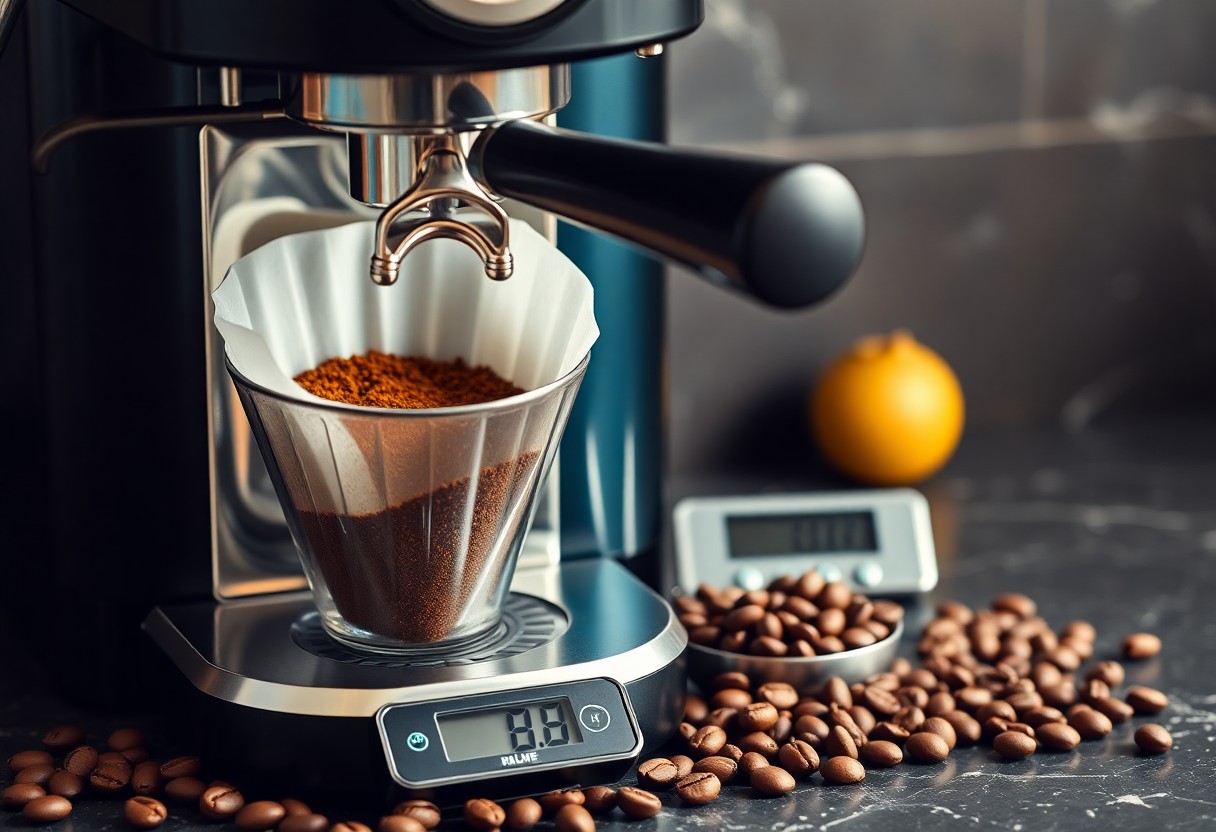
From Grounds to Cup: Tasting the Differences
The journey from grounds to cup is where the intricate details of your espresso truly emerge. Different grind sizes, brewing times, and extraction methods can significantly impact flavor and texture. You might find that adjusting the grind or the amount of coffee used introduces a spectrum of tastes—from bold and smoky to sweet and fruity. Exploring these variations allows you to discover your perfect cup, making every brew a unique experience.
Evaluating Flavor Profiles: What to Look For
As you savor your espresso, focus on the interplay of flavors that create a complete profile. Look for elements such as acidity, sweetness, bitterness, and body. Each cup tells a story, originating from the beans’ origin and roast level. You might be drawn to a vibrant acidity paired with smooth chocolate undertones or a rich, hearty base with a lingering caramel finish. Identifying these nuances enhances your appreciation for the craft of espresso-making.
Common Tasting Notes in Espresso
Many espresso drinks feature a complex palate with distinct tasting notes. You may encounter flavors ranging from dark chocolate to citrus fruits, as well as hints of nuts and spices. These characteristics can vary widely based on the coffee’s origin and preparation methods, offering an invitation to explore beyond the basics.
Generally speaking, associations arise with common tasting notes. For instance, Latin American coffees frequently carry a bright, fruity acidity, while Sumatran beans are known for their earthy and herbal qualities. Additionally, a medium roast often reveals a balance of sweetness and bitterness, ideal for those who enjoy depth without overwhelming intensity. By paying attention to these notes, you can develop a refined palate and better tailor your espresso to your taste preferences.
Final Words
To wrap up, when selecting coffee powder for your espresso machine, opting for a fine grind will significantly enhance your brewing experience and flavor extraction. Always consider the origin and roast level of your beans to match your taste preferences. For further insights on achieving the perfect grind for your espresso, explore resources like Espresso: The Grind. With the right grind, you’ll unlock the best potential of your espresso brew.
FAQ
Q: What type of coffee beans are best for fine grind espresso?
A: The best coffee beans for fine grind espresso are typically medium to dark roasts. Beans from specific regions like Latin America, Africa, or Indonesia work well. Look for blends that have a bold flavor profile, as these enhance the richness and depth typical of espresso.
Q: How fine should the coffee grind be for espresso?
A: For espresso, the grind should be very fine, almost resembling powdered sugar. This consistency ensures quick extraction during the brewing process, allowing for optimal flavor release and crema formation. The target is a grind size that can hold its shape when pressed but still allows water to flow through relatively unimpeded.
Q: Can I use pre-ground coffee in an espresso machine?
A: While you can use pre-ground coffee in an espresso machine, it’s advisable to use freshly ground coffee for the best flavor. Pre-ground coffee may not provide the same level of freshness and can result in a less flavorful espresso. If you do use pre-ground, ensure it is specifically labeled for espresso and has a fine grind.
Q: How do I know if my grind size is correct for espresso?
A: The grind size is correct if you can achieve a 25 to 30-second extraction time for your espresso shot. If the extraction is too fast, the grind may be too coarse; if it’s too slow, the grind may be too fine. A perfect shot should yield a rich and balanced flavor with a layer of crema on top.
Q: What impact does grind size have on espresso flavor?
A: Grind size significantly impacts espresso flavor by influencing extraction rate. A finer grind increases surface area, allowing for quicker extraction of oils and flavors, which results in a stronger, bolder taste. Conversely, a coarser grind may lead to under-extraction, resulting in sour or weak flavors. Adjusting grind size can help achieve the desired flavor profile for your espresso.

